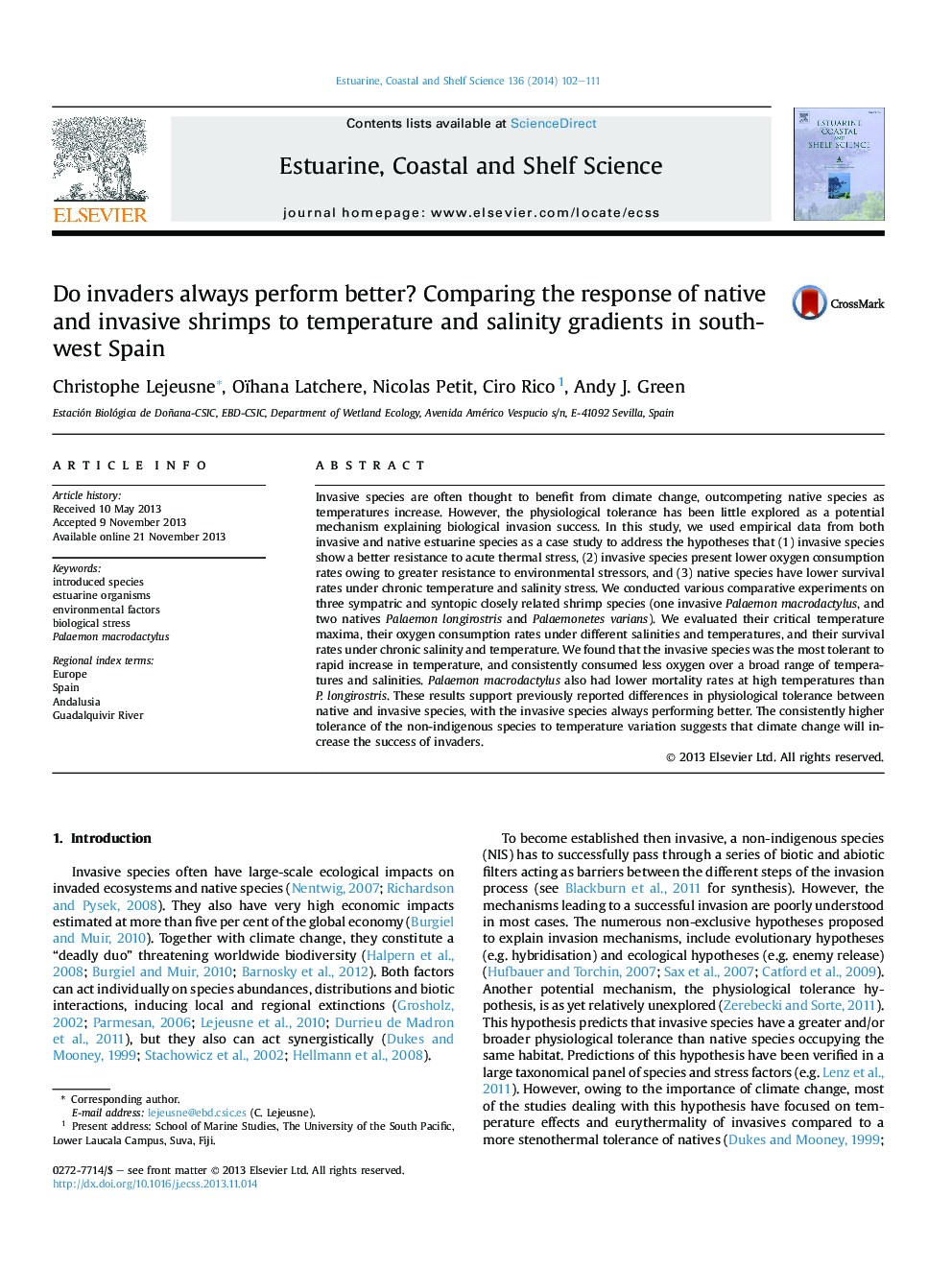| Article ID | Journal | Published Year | Pages | File Type |
|---|---|---|---|---|
| 6385003 | Estuarine, Coastal and Shelf Science | 2014 | 10 Pages |
Abstract
Invasive species are often thought to benefit from climate change, outcompeting native species as temperatures increase. However, the physiological tolerance has been little explored as a potential mechanism explaining biological invasion success. In this study, we used empirical data from both invasive and native estuarine species as a case study to address the hypotheses that (1) invasive species show a better resistance to acute thermal stress, (2) invasive species present lower oxygen consumption rates owing to greater resistance to environmental stressors, and (3) native species have lower survival rates under chronic temperature and salinity stress. We conducted various comparative experiments on three sympatric and syntopic closely related shrimp species (one invasive Palaemon macrodactylus, and two natives Palaemon longirostris and Palaemonetes varians). We evaluated their critical temperature maxima, their oxygen consumption rates under different salinities and temperatures, and their survival rates under chronic salinity and temperature. We found that the invasive species was the most tolerant to rapid increase in temperature, and consistently consumed less oxygen over a broad range of temperatures and salinities. Palaemon macrodactylus also had lower mortality rates at high temperatures than P. longirostris. These results support previously reported differences in physiological tolerance between native and invasive species, with the invasive species always performing better. The consistently higher tolerance of the non-indigenous species to temperature variation suggests that climate change will increase the success of invaders.
Keywords
Related Topics
Physical Sciences and Engineering
Earth and Planetary Sciences
Geology
Authors
Christophe Lejeusne, Oïhana Latchere, Nicolas Petit, Ciro Rico, Andy J. Green,
